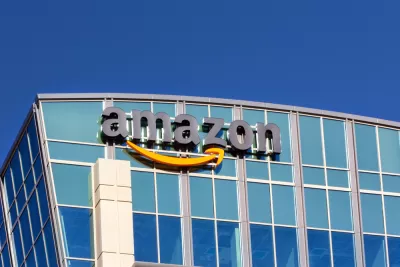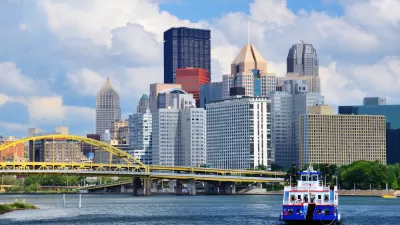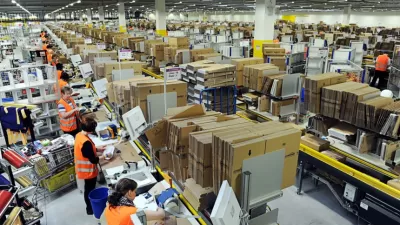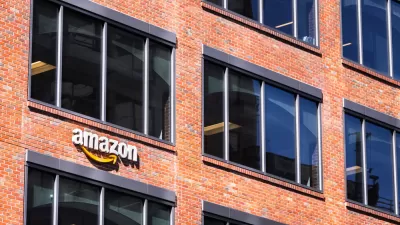In Baltimore, Amazon is at the center of a complicated web of products, services, and industries that is virtually impossible to avoid.

Scott Shane explores Amazon’s vast influence in the modern world by taking a closer look at the many ways it has deeply affected labor, commerce, transportation, and everyday life in Baltimore.
He starts with the area’s Amazon fulfillment centers—located on former General Motors and Bethlehem Steel sites. In a city that has lost most of its unionized industrial jobs, Amazon jobs are in demand, even without providing comparable pay and security. In addition, local officials have offered Amazon $65 million in tax breaks and loans to locate in Baltimore.
"But economists say online shopping has also erased thousands of retail jobs, and critics point to other costs, including traffic congestion and environmental effects, so assessing the company’s net impact is difficult," notes Shane.
Shane continues on by tracing Amazon’s expansion into a multitude of sectors and industries far beyond its start in online retail, including government and institutional procurement, freight and shipping, and cloud computing and software. While Baltimore offers just one example of a city contending with Amazon’s far-reaching influence, its experience highlights the important decisions city officials need to make and the lessons to be learned from past missteps.
"[Amy Webb] called the contest for Amazon’s second headquarters a 'ridiculous parade, a beauty contest' in which communities nationwide offered up inducements while failing to make a cleareyed assessment of costs and benefits. With its capabilities, market sway and long-term strategy, she said, Amazon now conducts itself like a 'nation-state,'" writes Shane.
FULL STORY: Prime Mover: How Amazon Wove Itself Into the Life of an American City

Trump Administration Could Effectively End Housing Voucher Program
Federal officials are eyeing major cuts to the Section 8 program that helps millions of low-income households pay rent.

Planetizen Federal Action Tracker
A weekly monitor of how Trump’s orders and actions are impacting planners and planning in America.

Ken Jennings Launches Transit Web Series
The Jeopardy champ wants you to ride public transit.

Philadelphia Is Expanding its Network of Roundabouts
Roundabouts are widely shown to decrease traffic speed, reduce congestion, and improve efficiency.

Why Bike Lanes Are Good: An Explainer for the US Transportation Secretary
Sean Duffy says there’s no evidence that bike lanes have benefits. Streetsblog — and federal agencies’ own data — beg to differ.

California Invests Additional $5M in Electric School Buses
The state wants to electrify all of its school bus fleets by 2035.
Urban Design for Planners 1: Software Tools
This six-course series explores essential urban design concepts using open source software and equips planners with the tools they need to participate fully in the urban design process.
Planning for Universal Design
Learn the tools for implementing Universal Design in planning regulations.
Ada County Highway District
Clanton & Associates, Inc.
Jessamine County Fiscal Court
Institute for Housing and Urban Development Studies (IHS)
City of Grandview
Harvard GSD Executive Education
Toledo-Lucas County Plan Commissions
Salt Lake City
NYU Wagner Graduate School of Public Service





























